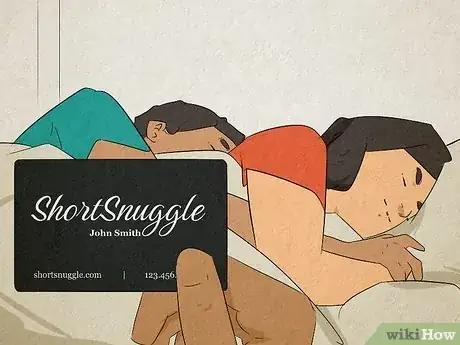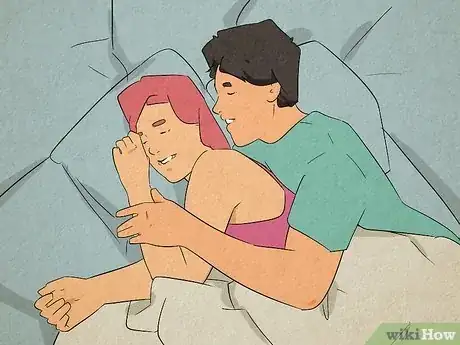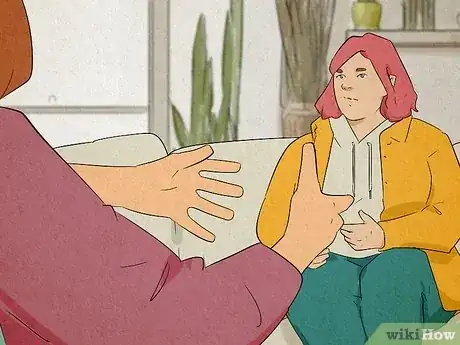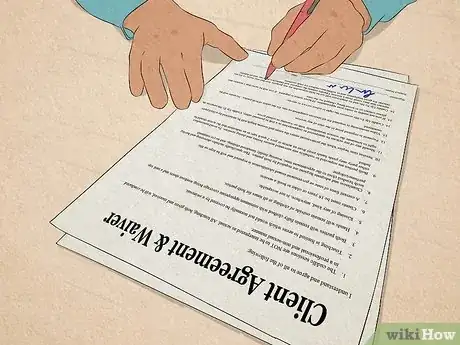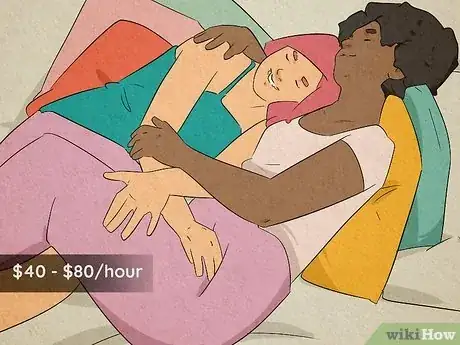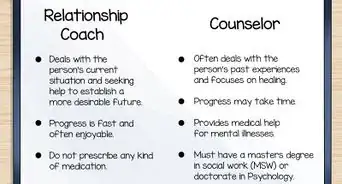This article was co-authored by wikiHow staff writer, Aly Rusciano. Aly Rusciano is a Creative Writer based outside of Nashville, Tennessee. She has over ten years of experience in creative, academic, and professional writing. Aly’s writing has been nationally recognized in the Sigma Tau Delta Rectangle and featured in Blue Marble Review, The Sunshine Review, PopMatters, and Cathartic Literary Magazine. She graduated from The University of Tennessee at Martin with a BA in English, focusing in Creative Writing and minoring in Theatre.
There are 12 references cited in this article, which can be found at the bottom of the page.
This article has been viewed 28,317 times.
Learn more...
Did you know that you can hug people and get paid for it? Professional cuddlers do just that! These snuggling pros, also known as cuddle therapists, use platonic touch to soothe clients and help them feel more at peace. But how does someone become a professional cuddler? In this article, we’ll tell you everything there is to know about this fascinating career, from what it entails to the skills needed. Keep reading because being a cuddle therapist may be the job for you.
Things You Should Know
- Being a professional cuddler is about more than giving hugs and snuggles—it requires empathy and compassion.
- Setting boundaries is crucial for becoming a cuddle therapist.
- Listening and adhering to a client’s needs is an essential part of a cuddler’s job.
Steps
How to Become a Professional Cuddler
-
1Enroll in a training course.[5] Professional cuddling isn’t as intuitive as it sounds. To be labeled a professional cuddler or cuddle therapist, you must undergo training to get certified. These training courses will teach you the art and science of cuddling, how to set boundaries, and the best ways to mentally care for others.
- Course length varies depending on the company you’re training with. Some courses last 3 days, while others last a month or require at least 30 hours of participation.
- Cuddlist and Certified Cuddlers offer online training and certification to become a professional cuddler.
-
2Apply for a position with a cuddling company or service. Once you're certified as a cuddler, reach out to local cuddling services to see if they’re hiring or submit an application to be a cuddle therapist associated with Cuddlist or Cuddle Comfort.
- Expect to give your ID and be background checked when applying to work with a cuddling company or service.
- Cuddlist requires their cuddlers to be company trained and certified, and a monthly fee of $39.99 is required to be a part of the community.
- Cuddle Comfort doesn’t require any training or certification before applying. This may be a good starting point if you want to get some experience under your belt and see what the job is like.
-
3Start your own cuddling business. If working for a corporate company isn’t for you, try self-starting a cuddling service of your own. Establish a business and marketing plan, and set up a website that showcases your services and features a way to book sessions. This will allow you to establish your own hours and pay rate.
- Many larger companies started their journeys as self-starters advertising on Facebook or other social media platforms.
- Don’t be afraid to talk to people about what you do, especially as you grow your company. The more you talk, the more word you’ll spread![6]
How to Stay Safe
-
1Set personal boundaries. As a professional cuddler, you’ll get physically and emotionally close to lots of people. Make sure you take time to refill your own cup, especially since you’ll be putting most of your energy into others. Setting personal boundaries that restore your energy could look like:[11]
- Meditating after a cuddle session
- Allowing sessions to only run for a set amount of time
- Scheduling a specific number of sessions a day
- Cuddling with loved ones on your time off
-
2Compose waivers for clients to sign before a session. During a consultation with a client, ask them to sign a waiver detailing your services before any cuddling begins.[12] This document should include the rules of your services, the risks involved, hygienic standards, and the boundaries set between you and the client.[13]
- Seek help from a lawyer to draft and compose the best waiver possible.
- Write a waiver even if you work with a bigger company. Double-check with your boss, supervisor, or representative to see if your company already has a drafted waiver you can use that states the company’s guidelines and risk factors.
-
3Ask your client questions. While consulting a potential client, ask them questions about their health, so you’ll be aware of any health conditions before starting a session. As a cuddle therapist, it’s your job to give clients the best and most appropriate care, but you also need to consider your own health. Never take on a client who may put your own physical health at risk.[14]
-
4Set up security in your cuddling space. Some professional cuddlers opt for placing cameras inside cuddling rooms or within a cuddling studio’s space.[15] This can provide an extra level of security, as security footage documents any potential ill-will or wrongdoing.
References
- ↑ https://youtu.be/oM6u-GwR9O4?t=274
- ↑ https://www.pennmedicine.org/updates/blogs/health-and-wellness/2018/february/affection
- ↑ https://repeller.com/professional-cuddler/
- ↑ https://youtu.be/oM6u-GwR9O4?t=283
- ↑ https://youtu.be/r4e1RQLeVC4?t=34
- ↑ https://youtu.be/dxgLn-kpY2w?t=154
- ↑ https://repeller.com/professional-cuddler/
- ↑ https://youtu.be/r4e1RQLeVC4?t=201
- ↑ https://youtu.be/r4e1RQLeVC4?t=7
- ↑ https://parade.com/619555/beckyhughes/a-professional-cuddler-answers-the-questions-youre-dying-to-ask-about-her-job/
- ↑ https://youtu.be/dxgLn-kpY2w?t=236
- ↑ https://youtu.be/dxgLn-kpY2w?t=146
- ↑ https://www.cnbc.com/2013/11/25/samantha-hess-sells-hugs-for-people-feeling-down.html
- ↑ https://parade.com/619555/beckyhughes/a-professional-cuddler-answers-the-questions-youre-dying-to-ask-about-her-job/
- ↑ https://parade.com/619555/beckyhughes/a-professional-cuddler-answers-the-questions-youre-dying-to-ask-about-her-job/




